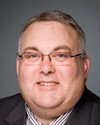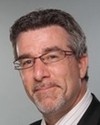Thank you so much. It's always a pleasure to come before this committee and to present the main estimates.
I'm pleased to be here today with the acting clerk, Marc Bosc, and Mark Watters who, you will remember from the last time we were here, is the chief financial officer. We are also joined by Stéphan Aubé, chief information officer; Philippe Dufresne, law clerk and parliamentary counsel; André Gagnon, acting deputy clerk, procedural services; Benoit Giroux, director general for parliamentary precinct operations; Patrick McDonnell, deputy sergeant-at-arms and director general of the protective service; and Pierre Parent, chief human resources officer.
Today I will be presenting the House of Commons main estimates and the supplementary estimates (A) for 2015-16. I'll begin with a presentation of the main estimates and will conclude with the information for supps (A).
The 2015-16 main estimates total $443,449,000. This represents an increase of 7% over the 2014-15 main estimates funding levels.
For reference purposes, you have received a document outlining the year-over-year changes for the main estimates between 2014-15 and 2015-16. I will proceed by providing an overview of each line item in the main estimates along four major themes: budgets for members, House officers and presiding officers; House Administration; electoral boundaries redistribution; and employee benefit plans.
I will start with the budgets for members, House officers and presiding officers.
At its meeting of March 3, 2014, the Board of Internal Economy acknowledged an increase of 2.2%, effective April 1, 2014, to members' annual sessional allowance and additional salaries. This funding is statutory in nature and is in accordance with provisions in the Parliament of Canada Act. The increase amounts to $1.2 million for all fiscal years beginning with 2014-15.
There are also several items in the main estimates that relate to the House of Commons administration.
The first item included under this theme is funding of $5.7 million that is required for ongoing maintenance and life-cycle replacement costs for information technology assets resulting from the long-term vision and plan. This plan will result in modernized buildings and information service platforms for parliamentarians over the next 25 to 30 years, ensuring the continued availability of appropriate space and services.
Next, as you know, improving the disclosure of members' expenses has been an ongoing priority for the board. The members' expenditure reports are now published on a quarterly basis and provide considerable enhancements in the reporting of travel and hospitality expenses that are intended to ensure alignment with the Government of Canada's proactive disclosure of ministerial expenses.
To this end you will note that the main estimates allocate $3.3 million for fiscal year 2015-16 and subsequent years to sustain improvements in the public reporting of members' expenditures. Permanent funding is required to expand claim processing and verification, as well as monthly and quarterly reconciliation processes, to respond to additional inquiries from members' offices and to ensure an appropriate level of support and training for members and staff.
The main estimates also include temporary funding in the amount of $758,000 for the 24th annual meeting of the Asia-Pacific Parliamentary Forum. This upcoming conference for parliamentarians representing the 27 member countries of the Asia-Pacific region will be an excellent opportunity to foster parliamentary diplomacy, advance Canadian objectives internationally and showcase Canada's west coast. Planning is already well under way for this meeting that will take place in Vancouver in January 2016.
The main estimates also allocate additional resources related to security. Security within the parliamentary precincts has always been a priority, but in the wake of the incident last October and heightened terrorist threats, an enhanced security posture has been necessary. To fund the arming of all House of Commons uniformed protective service personnel, temporary funding in the amount of $932,000 was requested through the supplementary estimates (C) for fiscal year 2014-15. Permanent funding of $533,000 is required for fiscal year 2015-16 and subsequent years.
If the committee would permit, I would also like to provide a brief update on some of the other advances that have been made to enhance security for parliamentarians, employees, and visitors to Parliament Hill.
In the coming weeks we'll be finalizing our review of the internal and external reports that have come as a result of the attacks on October 22. I will be reaching out to key stakeholders, including the board, caucuses, independent members of Parliament, House administration employees, and others to provide what information they can about this terrible incident and the steps we have taken to help reduce risks in the future.
While for our own security I am limited in the amount of specific detail I can provide about our security posture and some of the improvements to the physical security of our buildings, I can say that work on conducting an independent security assessment is progressing well. Further, we have implemented a program to oversee and monitor security enhancements and various physical security upgrades to buildings in the precinct and they are progressing as planned.
Recently, it was announced that there are new protocols in place for visitors to Parliament Hill. Tickets are now required to visit the Peace Tower, the Memorial Chamber and the East Block. Additionally, visitors are only permitted to bring one bag into the Parliament buildings and there is a size restriction. Ticketing and bag check services are offered at no charge at 90 Wellington Street, across from Parliament Hill.
Security at constituency offices has also been a focus of our attention, and we have worked with members and their staff to assess and enhance these particular security needs. The deputy sergeant-at-arms and director general for the protective service contacted hundreds of local police departments across the country in communities where constituency offices are located to ensure that these premises will be regularly patrolled and included on the priority response list.
I'm especially pleased to report that the progressive development of an emergency notification system has begun. Once it is fully deployed, this system will be able to reach all parliamentarians and employees to provide reliable information and clear instructions should there ever be an emergency in the future. These important messages will be able to be simultaneously transmitted through email, voice message, text message, and desktop pop-ups.
Finally, as you know, last October I requested that the Ontario Provincial Police conduct an independent investigation into the death Michael Zehaf-Bibeau. The OPP has completed its investigation and I have received a copy of the report. A redacted version will be available to the public in the coming weeks. The House of Commons incident response summary will also be released to provide additional context on the events of October 22 and to provide further detail about the improvements that have been taken to enhance security in the precinct in recent months.
Returning to the main estimates, an additional $78,000 in compensation has been allocated for House Administration employees. This funding specifically covers the 1% economic increase approved in 2013-14 for senior managers, in line with the economic increase granted by the Treasury Board to its senior management.
Additionally, the main estimates provide a $22,000 increase for pages' remuneration. Compensation for our pages increases in lockstep with the average increases in tuition fees at the University of Ottawa and Carleton University. I have no doubt that we all want to ensure the page program remains competitive and continues to attract the brightest and the best from across the country.
You will note that the main estimates also reflect reductions for two instances of temporary funding following the hosting of two parliamentary conferences: $227,000 for the 40th Annual Session of the Assemblée parlementaire de la Francophonie, which took place in July 2014; and $167 million for the 11th Conference of Parliamentarians of the Arctic Region, which was held in October 2014. This funding for these two very successful conferences is no longer required.
We'll now move on to funding that is allocated for the electoral boundaries redistribution. Following the latest census, 30 new constituencies will be added for the next general election. To address the financial implications of these 30 new constituencies, the main estimates include temporary funding of $17.5 million for fiscal year 2015-16 and permanent funding in the amount of $24.5 million for fiscal year 2016-17 and subsequent years.
This funding takes into consideration requirements for members, including pay and pension, travel, telecommunication services, office budgets, and parliamentary and constituency office expenditures, as well as additional funding requirements to enable the House administration to support the institution and to ensure the same level of service for the expanded membership.
The final item that is included in the main estimates is an increase of $967,000 to employee benefit plans for fiscal year 2015-16 and subsequent years. This is a non-discretionary statutory expense that, in accordance with Treasury Board benefit rates, has been adjusted from 16.5% of salaries to 16.8% of salaries effective April 1, 2015.
Let me turn now to supplementary estimates (A).
This now concludes our overview of the House of Commons' main estimates.
I would now like to speak about the House of Commons' request of $15,981,000 for supplementary estimates (A). This request includes funding for 5 items.
The first item addresses funding in the amount of $1.2 million for the increase to members' annual sessional allowance and additional salaries, which became effective April 1, 2015. This funding is statutory in nature and follows an index published by Employment and Social Development Canada. The funding request associated with this 2.3% increase for 2015 also takes into account the impact of 30 additional members following the next general election.
The second item included in the supplementary estimates (A) is for $6.5 million for the implementation of new security measures across the parliamentary precinct. This includes the measures I referred to earlier and other actions taken as we continue to assess our security posture within the precinct
The third item, for which funding of $3.8 million is requested, pertains to the increased resource requirements resulting from the commissioning of the Sir John A. Macdonald Building and the building at 180 Wellington Street as part of the long-term vision and plan.
The fourth item also relates to the House of Commons' commitments emanating from the long-term vision and plan. Specifically, funding of $2 million is required for the maintenance and life-cycle costs of building component assets.
The final item included in supplementary estimates (A) is for funding of $2.4 million for the economic increases for House Administration employees. The agreement provides economic increases of 1.5% for 2014-15, 0.75% for 2015-16 and 0.75% for 2016-17. The funding will be used to cover economic increases for employees of the Protective Service, the Procedural Clerks and Analysis and Reference sub-groups, the Technical group and unrepresented employees at the House of Commons.
This concludes my overview of the House of Commons 2015-16 main estimates and supplementary estimates (A). At this time I would be happy to answer any questions you might have.





